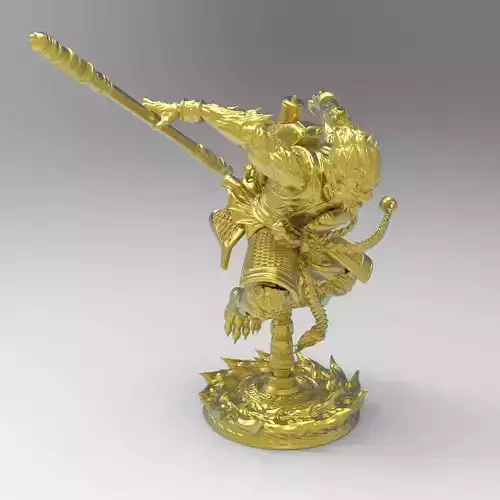1/14
As one of the most enduring Chinese literary characters, the Monkey King has a varied background and colorful cultural history. His inspiration comes from an amalgam of Indian and Chinese culture. The Monkey King was possibly influenced by the Hindu deity Hanuman, the Monkey-God, from the Ramayana, via stories passed by Buddhists who traveled to China. The Monkey King's origin story includes the wind blowing on a stone, whereas Hanuman is the son of the God of Wind. Some scholars believe the character originated from the first disciple of Xuanzang, Shi Banto.
His inspiration might have also come from the White Monkey legends from the Chinese Chu kingdom (700–223 BC), which revered gibbons. These legends gave rise to stories and art motifs during the Han dynasty, eventually contributing to the Monkey King figure.
He may have also been influenced by local folk religion from Fuzhou province, where monkey gods were worshipped long before the novel. This included the three Monkey Saints of Lin Shui Palace, who were once fiends, who were subdued by the goddess Chen Jinggu, the Empress Lin Shui. The three were Dan Xia Da Sheng (丹霞大聖), the Red Face Monkey Sage, Tong Tian Da Sheng (通天大聖), the Black Face Monkey Sage, and Shuang Shuang San Lang (爽爽三聖), the White Face Monkey Sage. The two traditional mainstream religions practiced in Fuzhou are Mahayana Buddhism and Taoism. Traditionally, many people practice both religions simultaneously. However, the roots of local religion dated back centuries. These diverse religions embodied elements such as gods and doctrines from different provincial folk religions and cultures, such as totem worship and traditional legends. Though there are primarily two main religions in China, since it is so big, different folk stories will vary from towns, cities, and provinces with their own myths about different deities. Sun Wukong's religious status in Buddhism is often denied by Buddhist monks both Chinese and non-Chinese alike, but is very welcomed by the general public, spreading its name around the world and establishing itself as a cultural icon.
REVIEWS & COMMENTS
accuracy, and usability.














